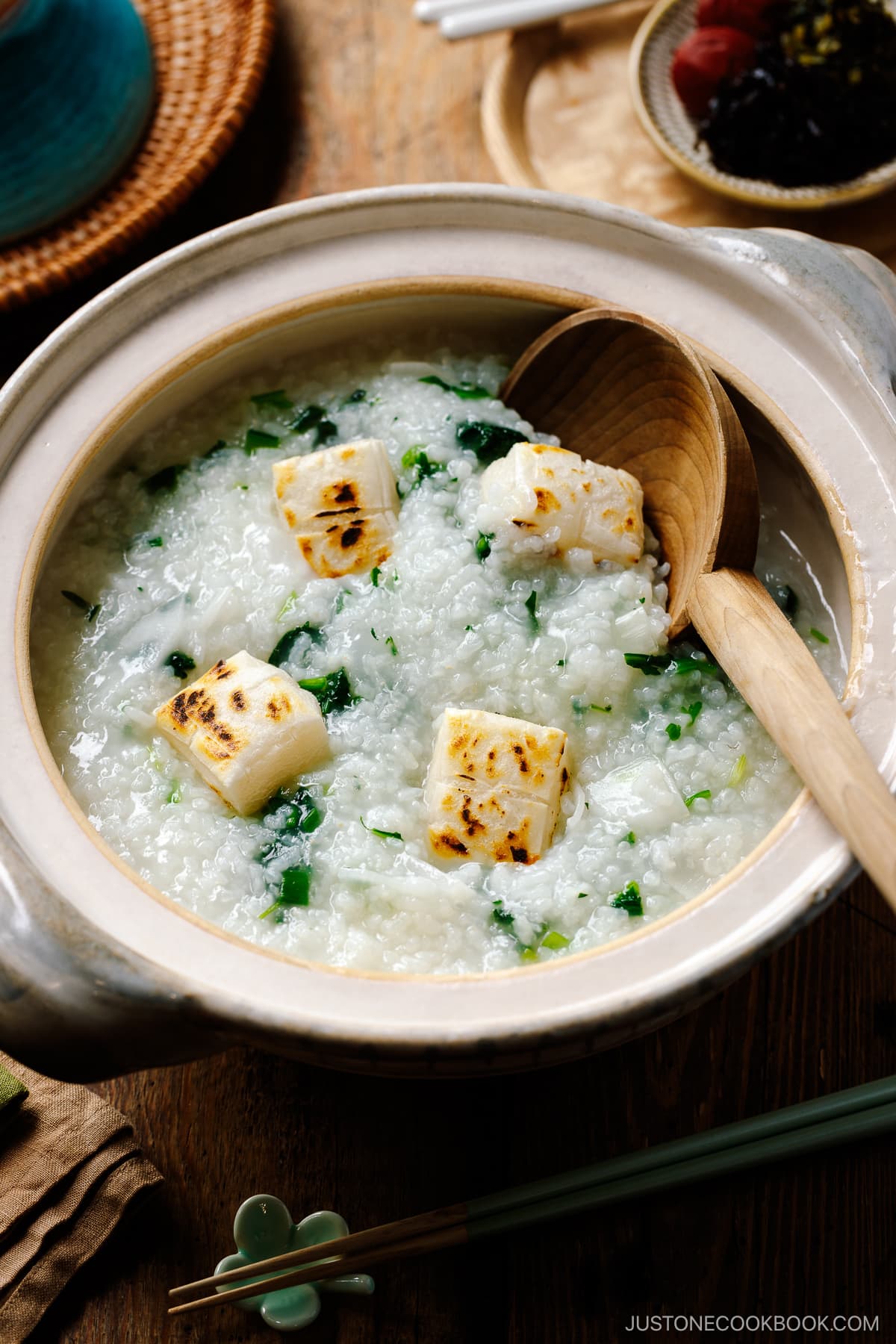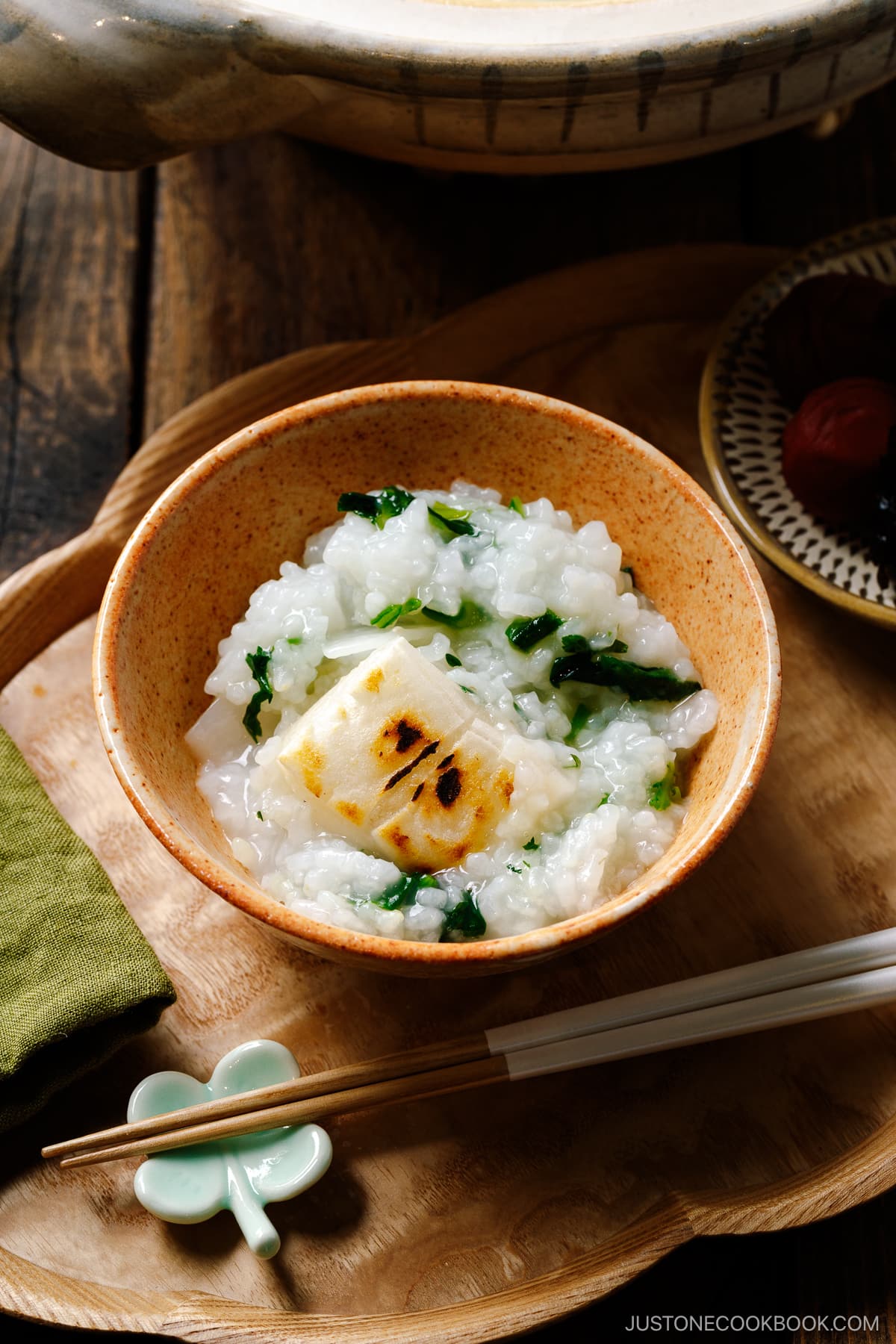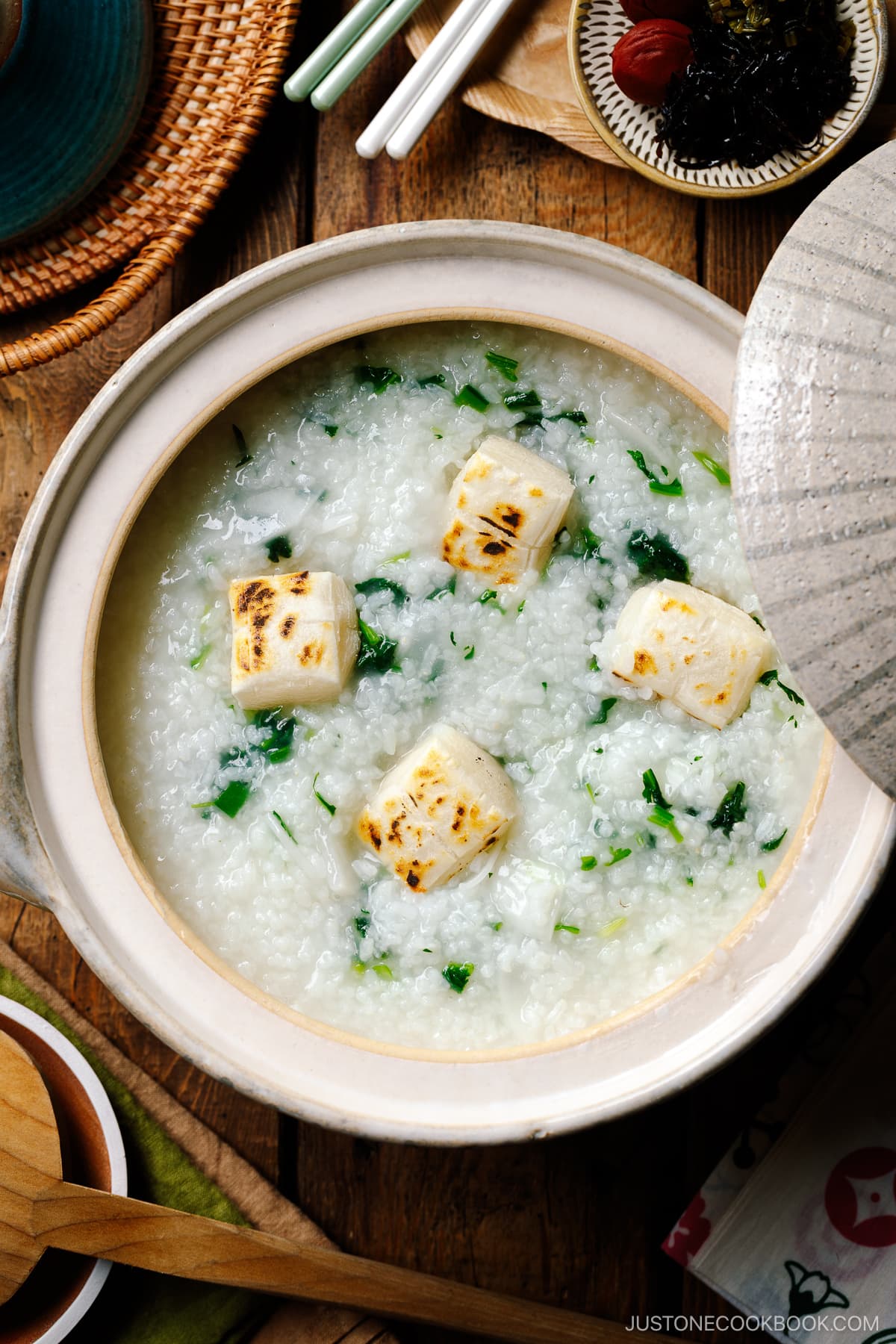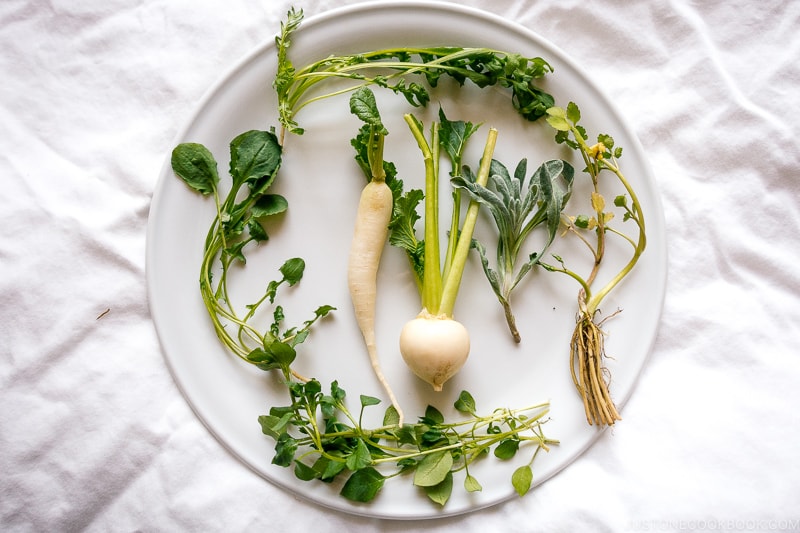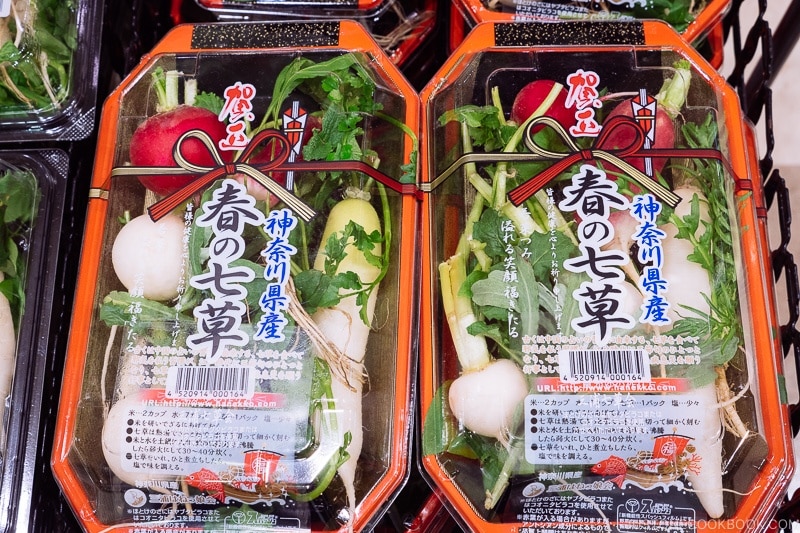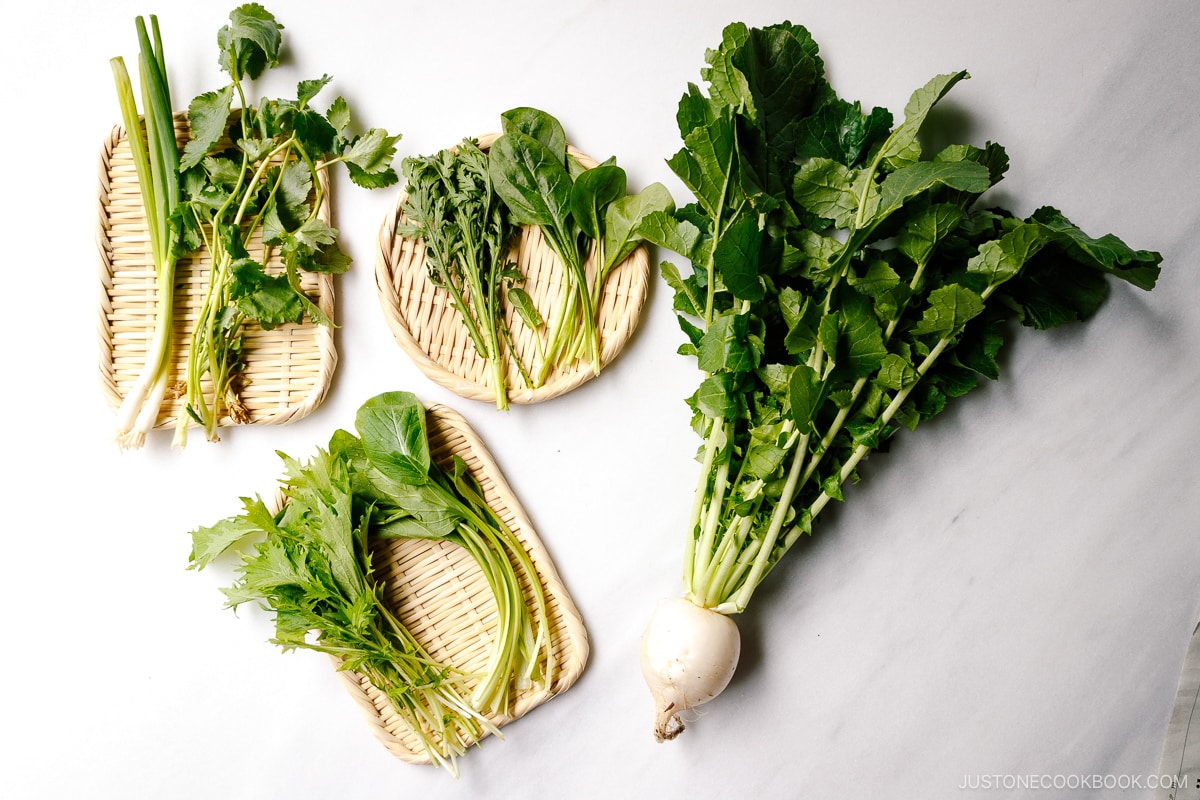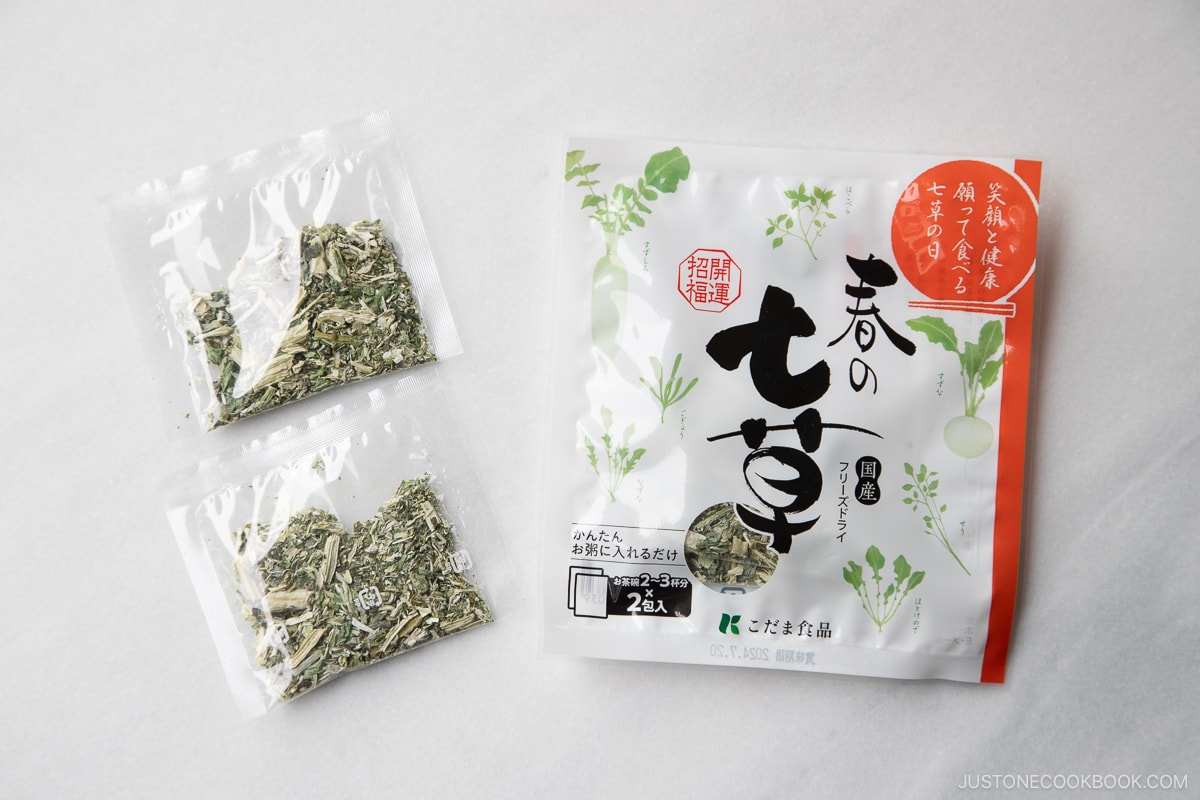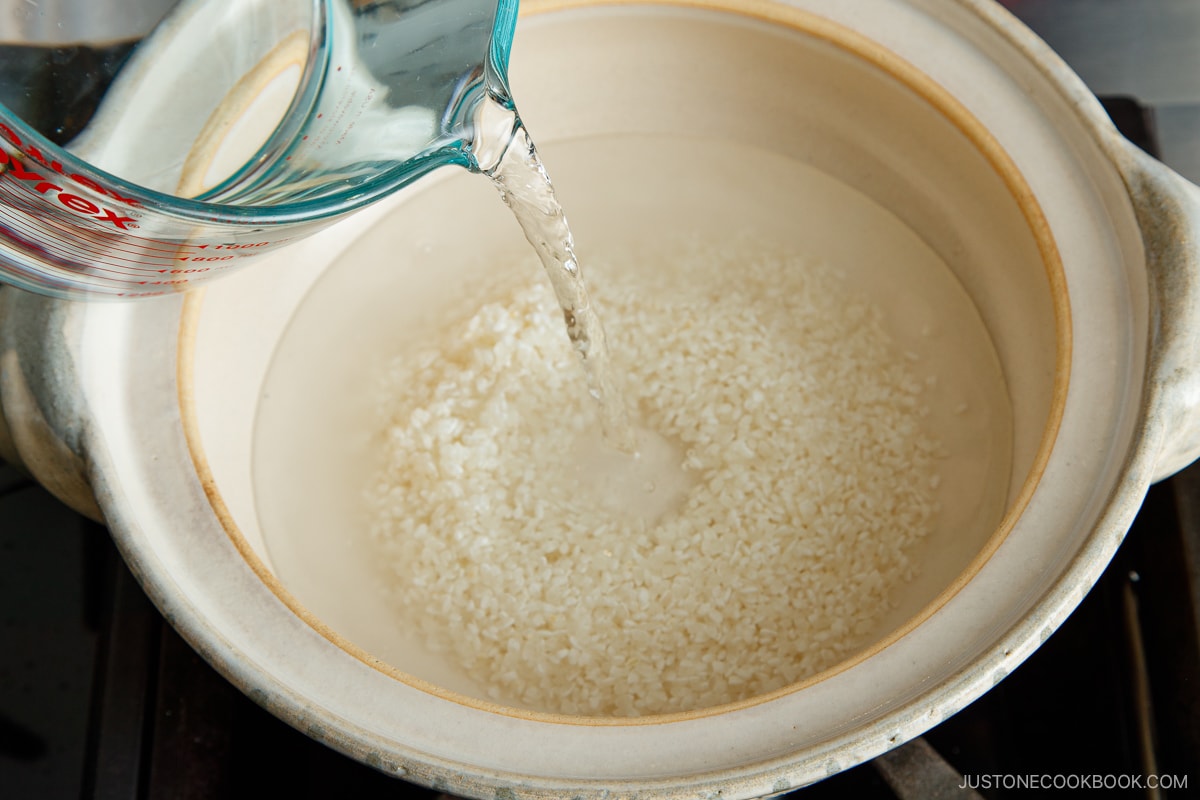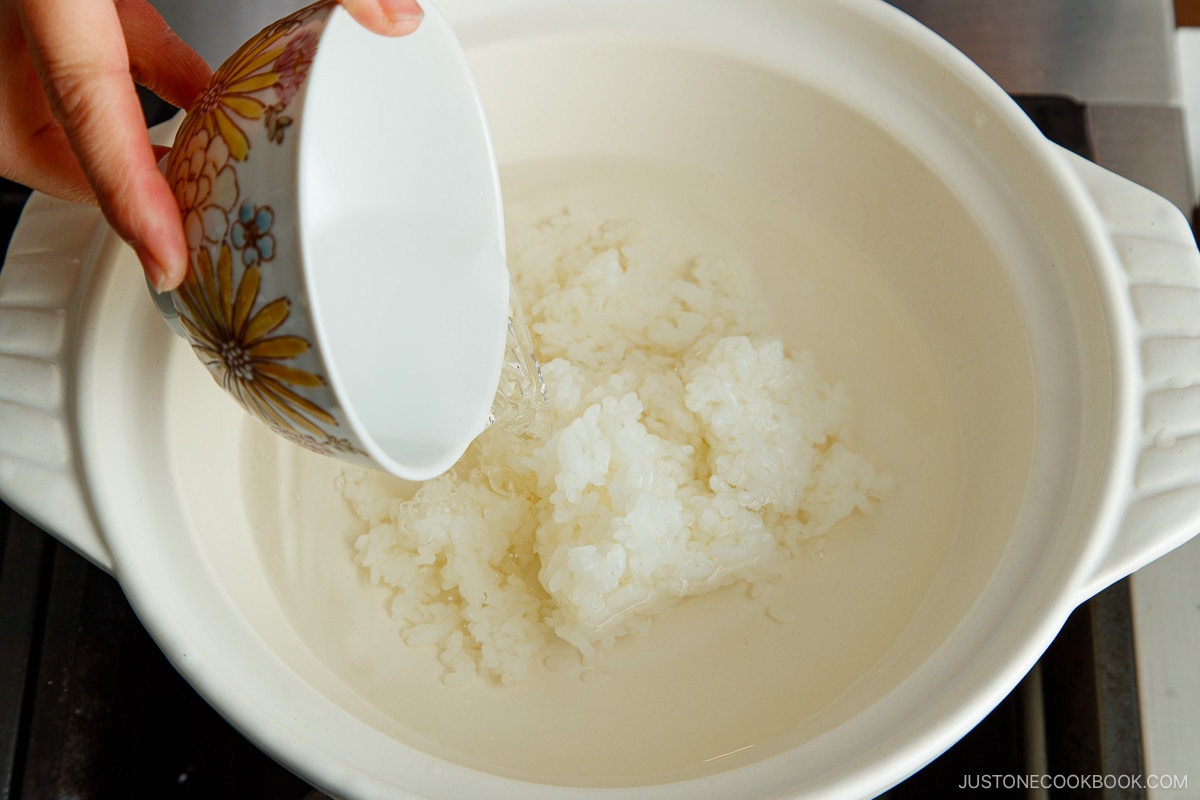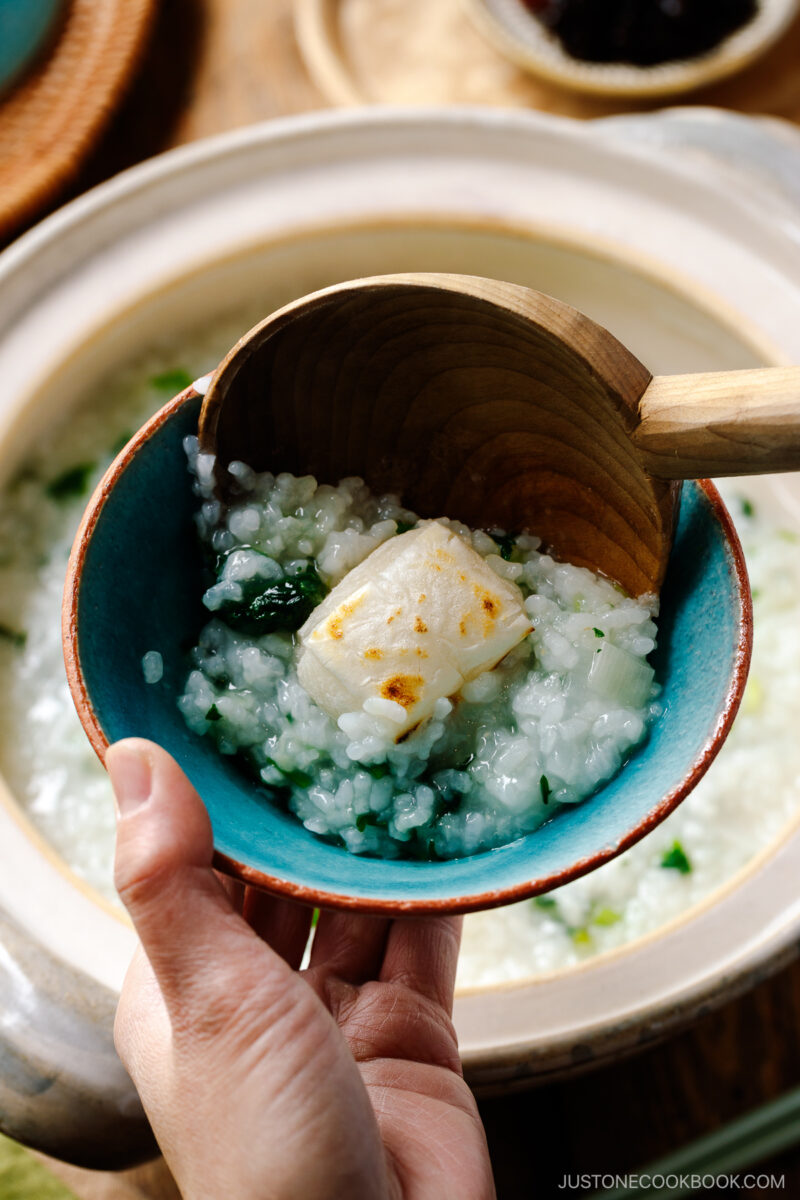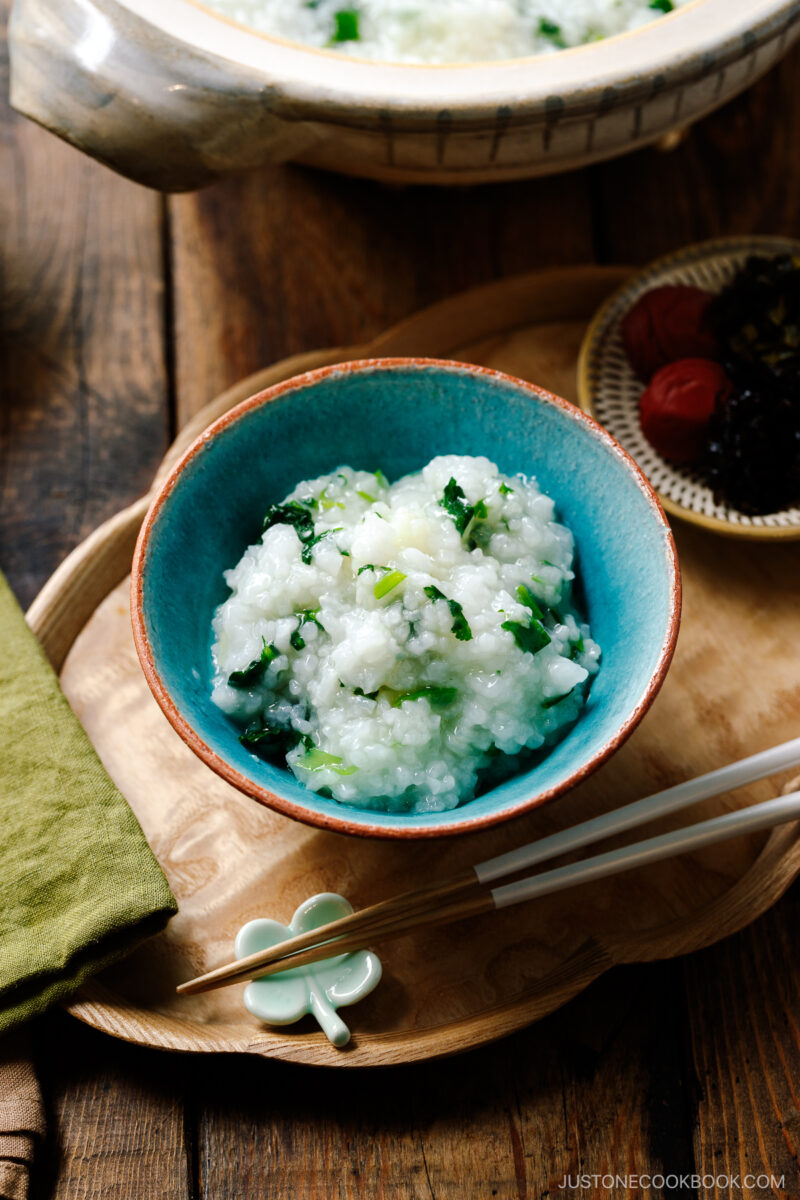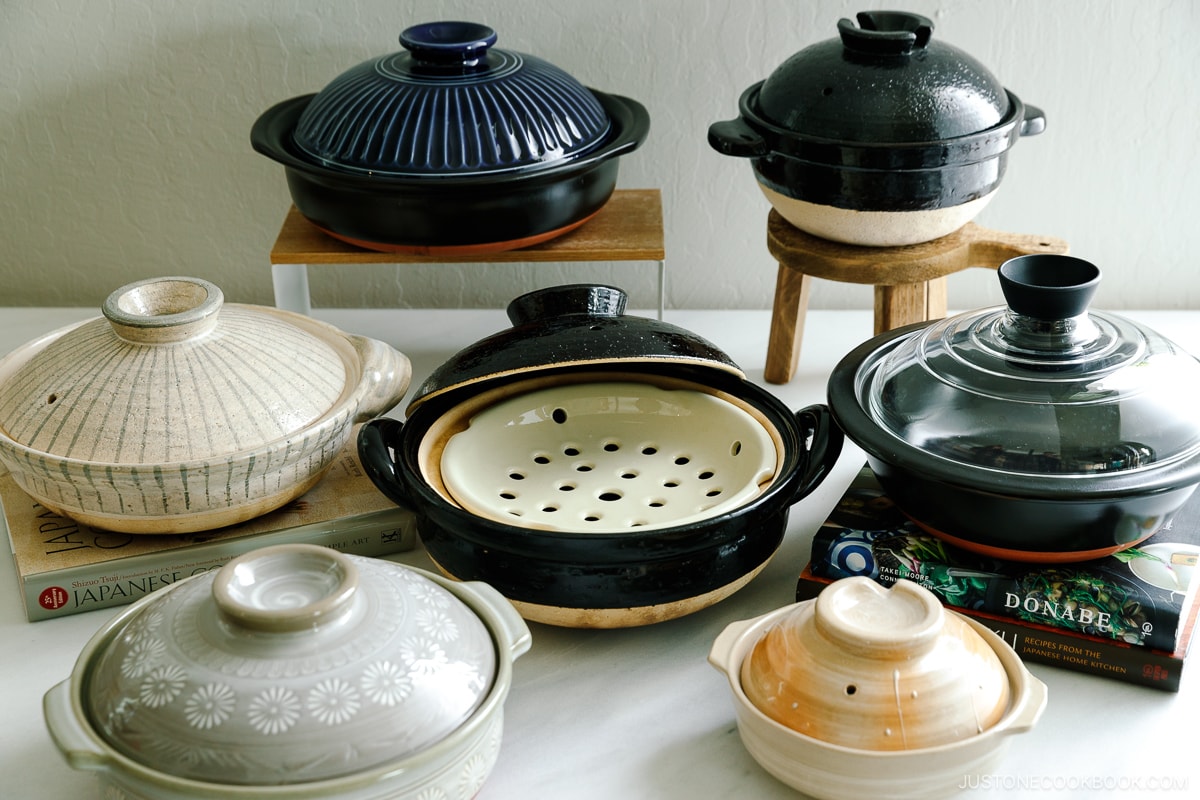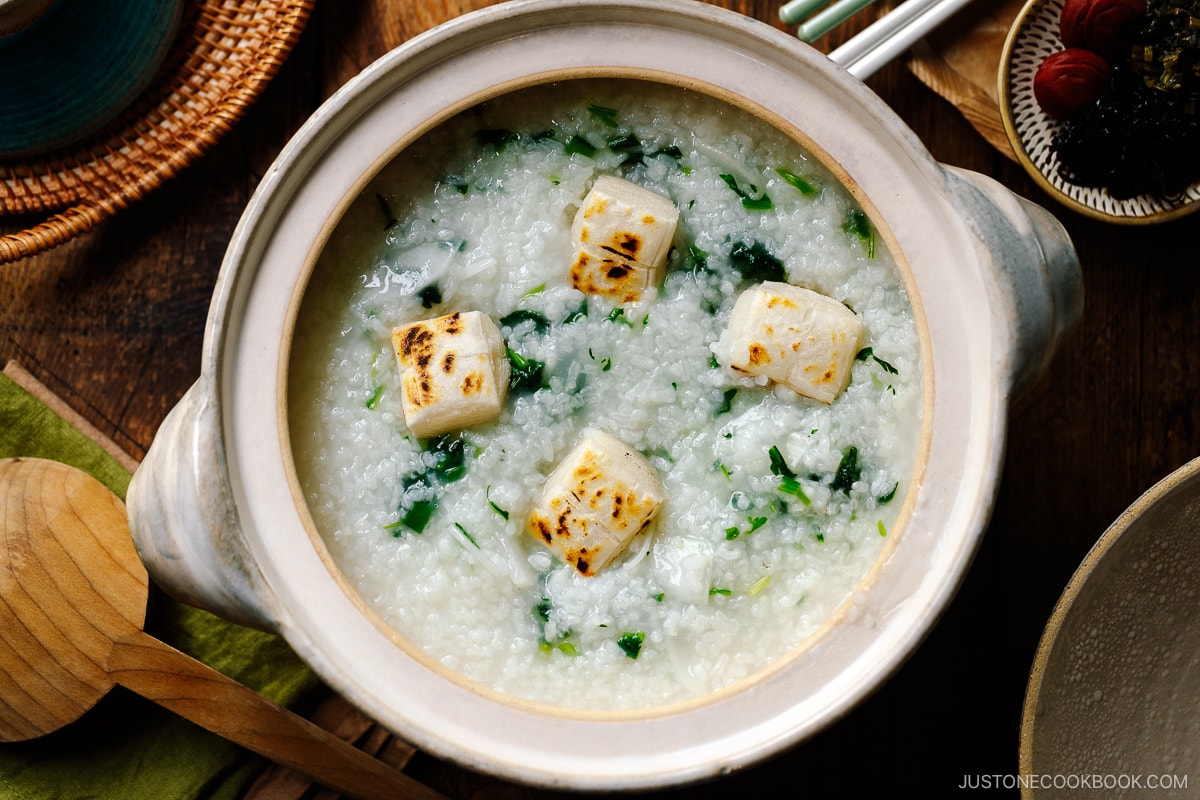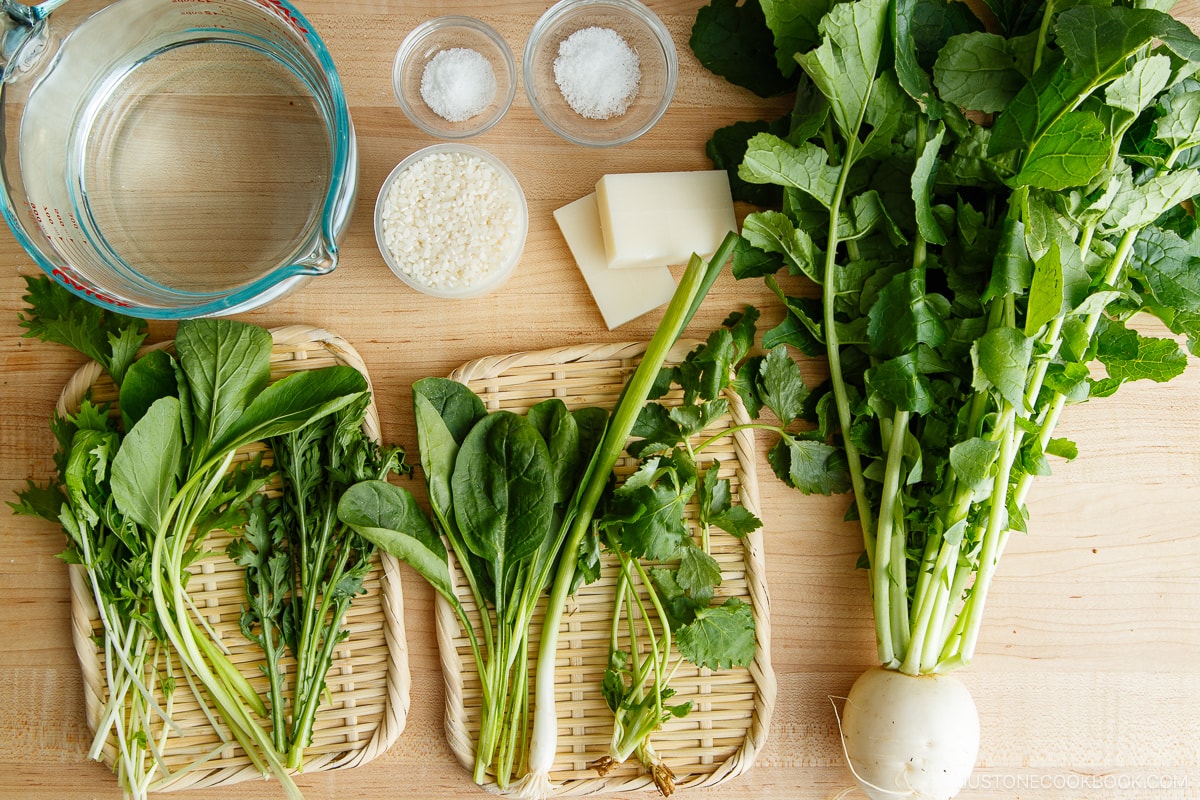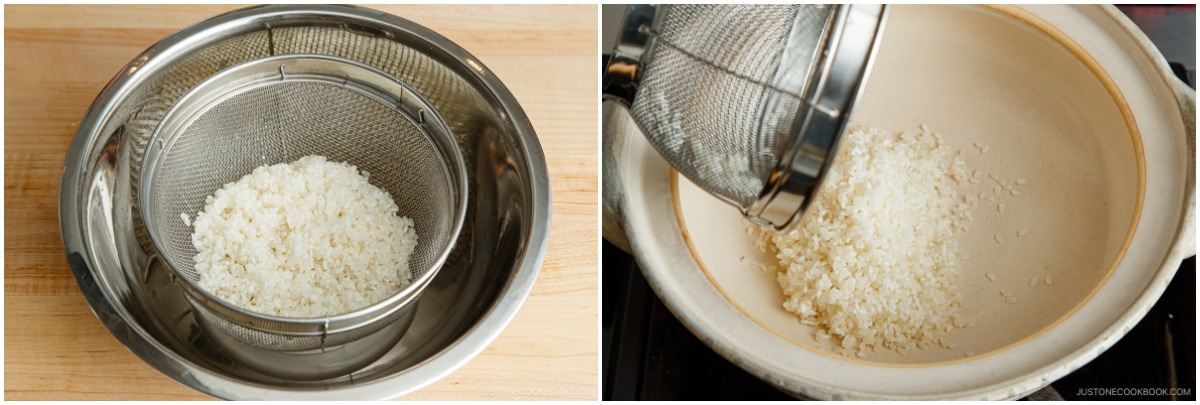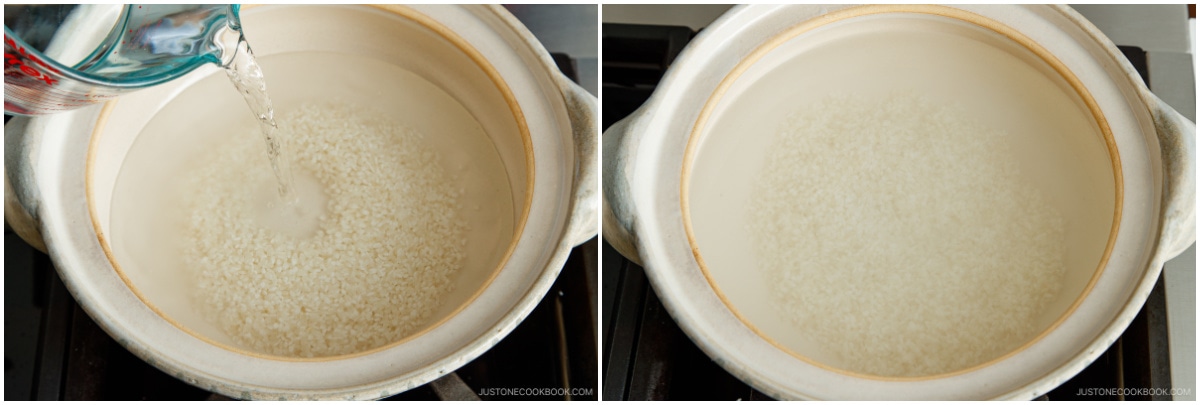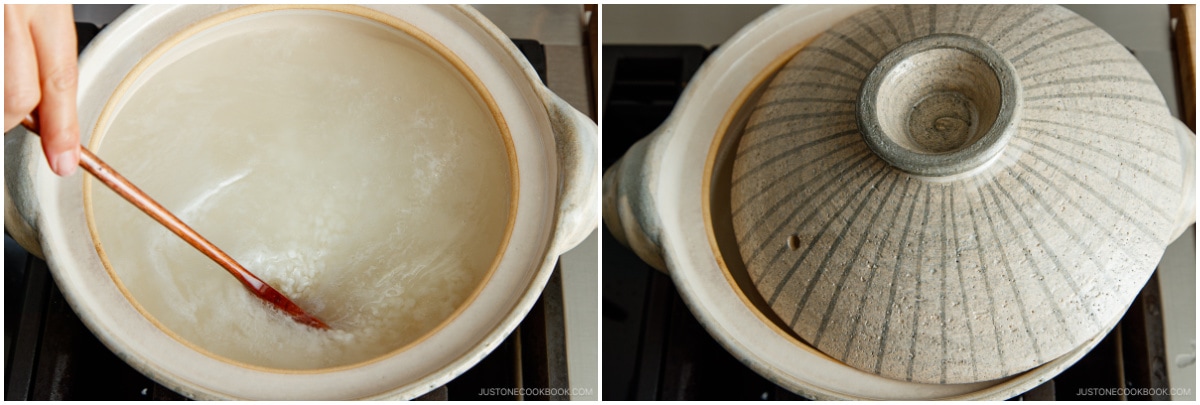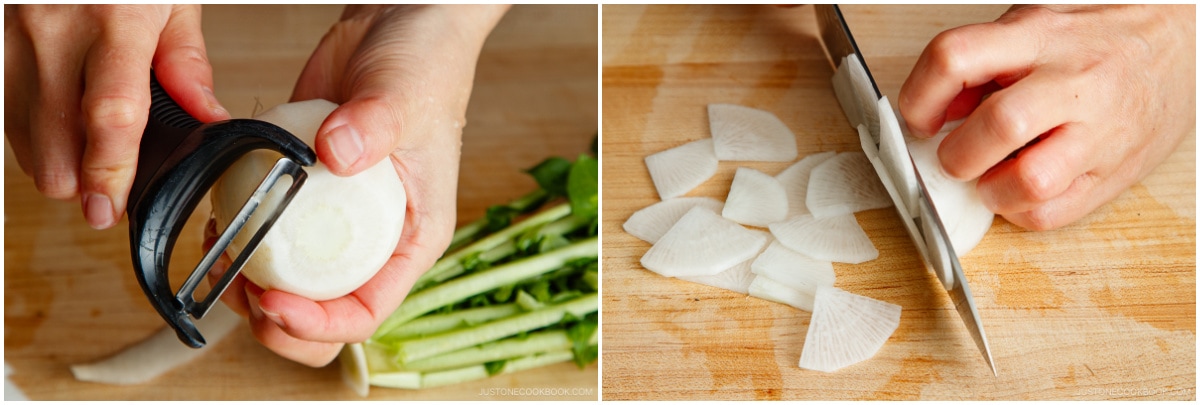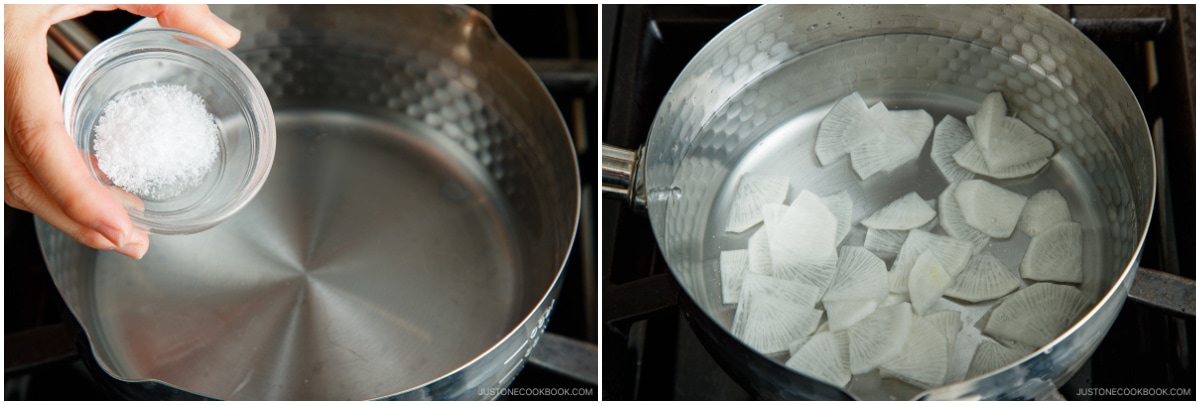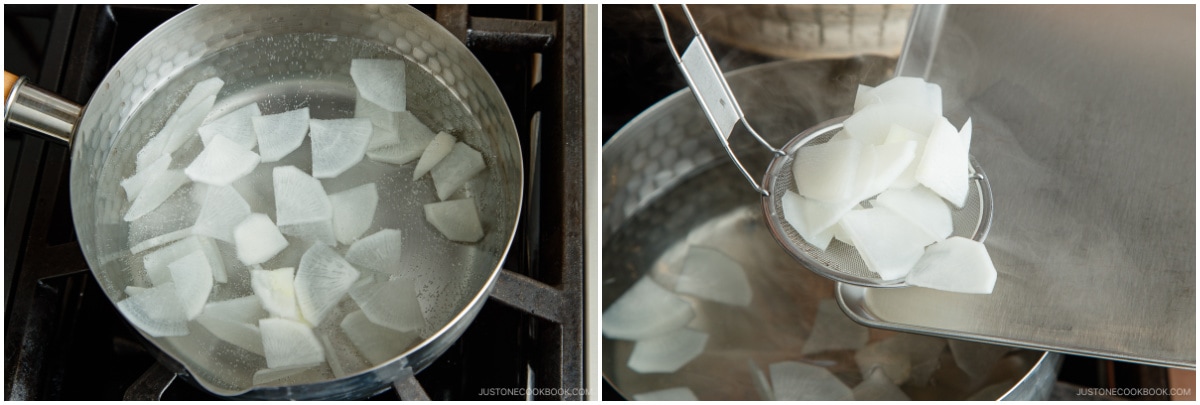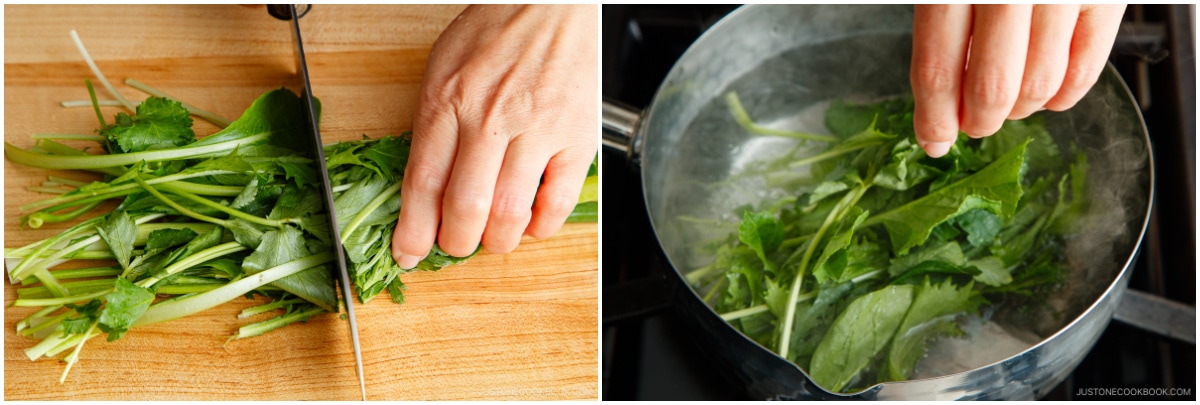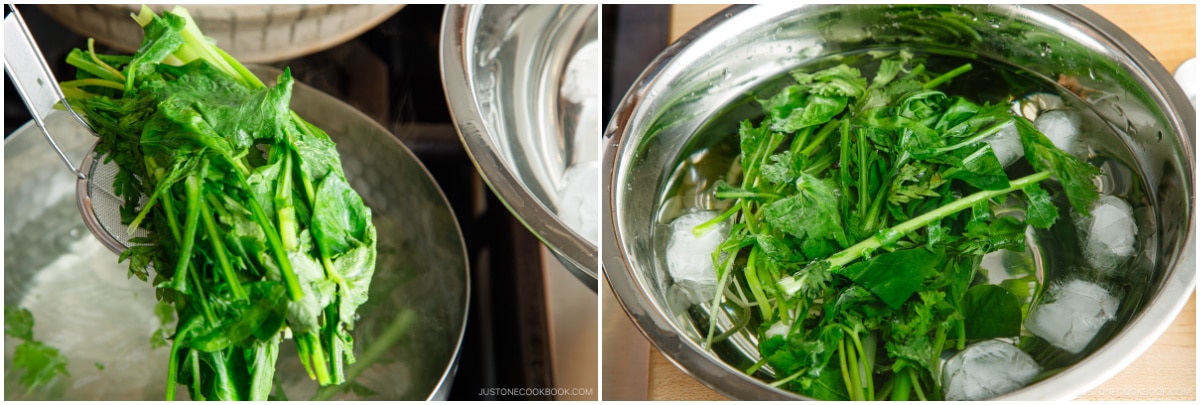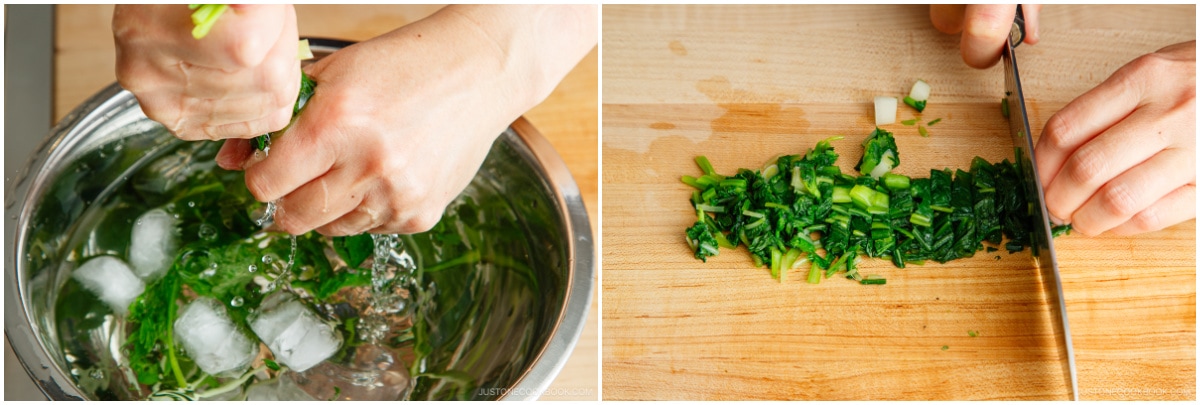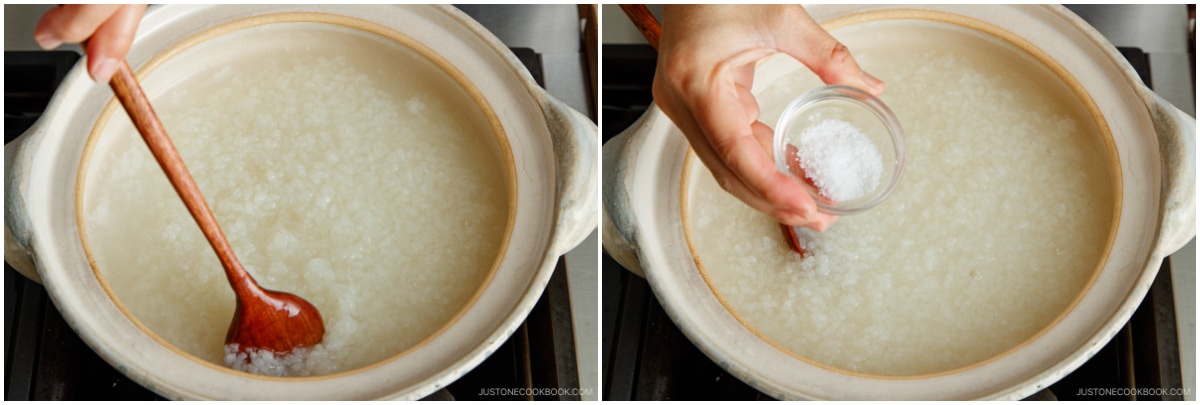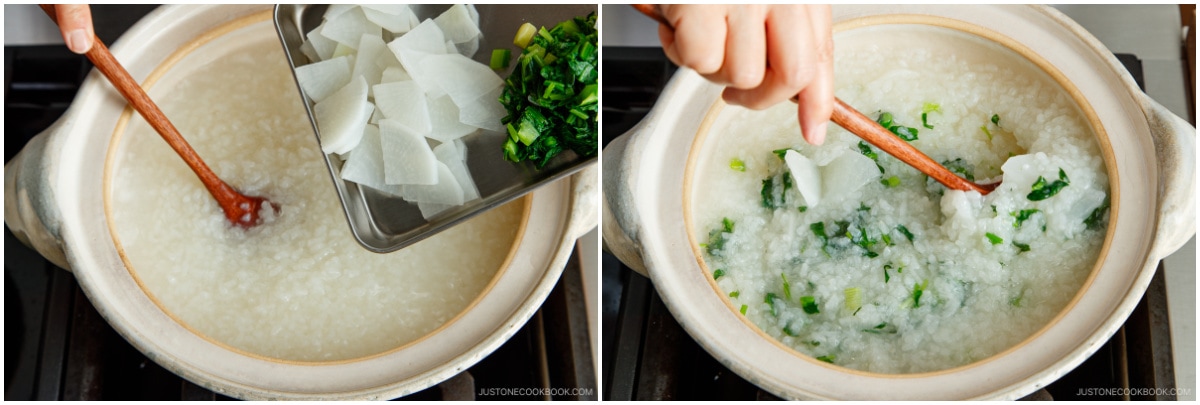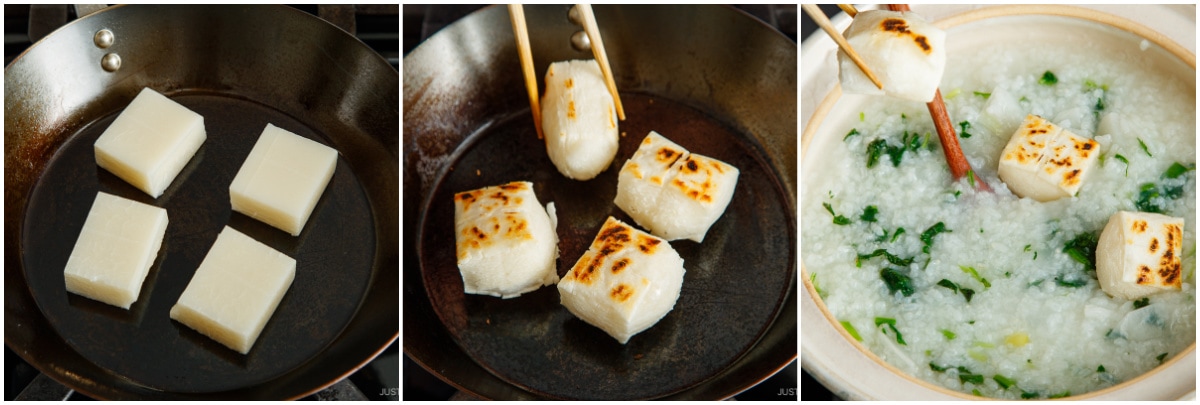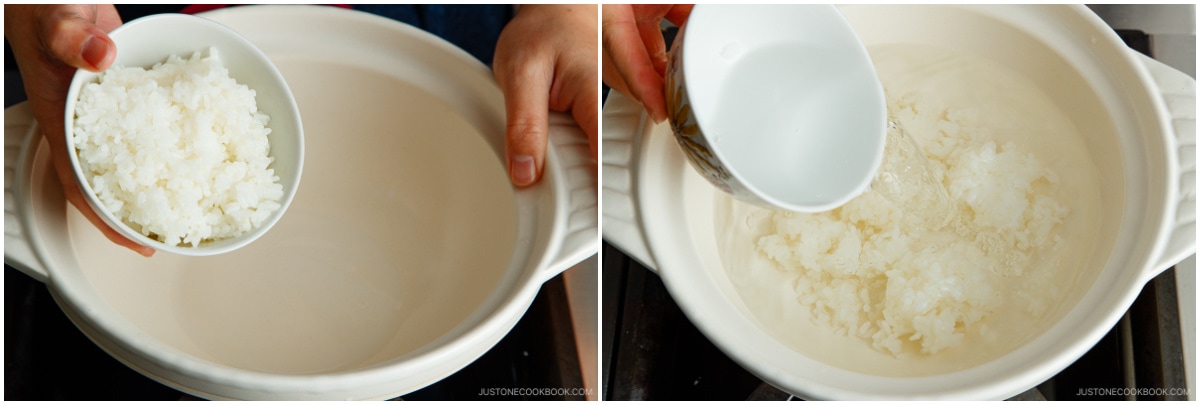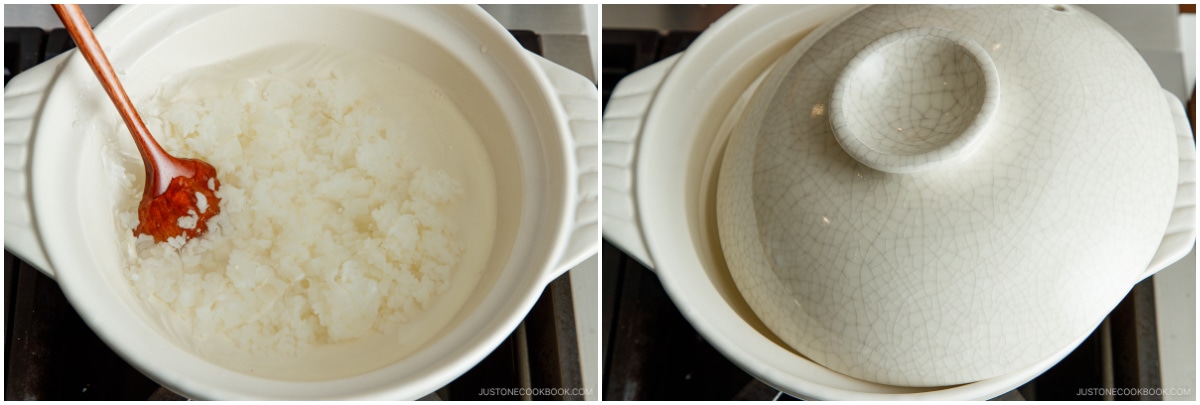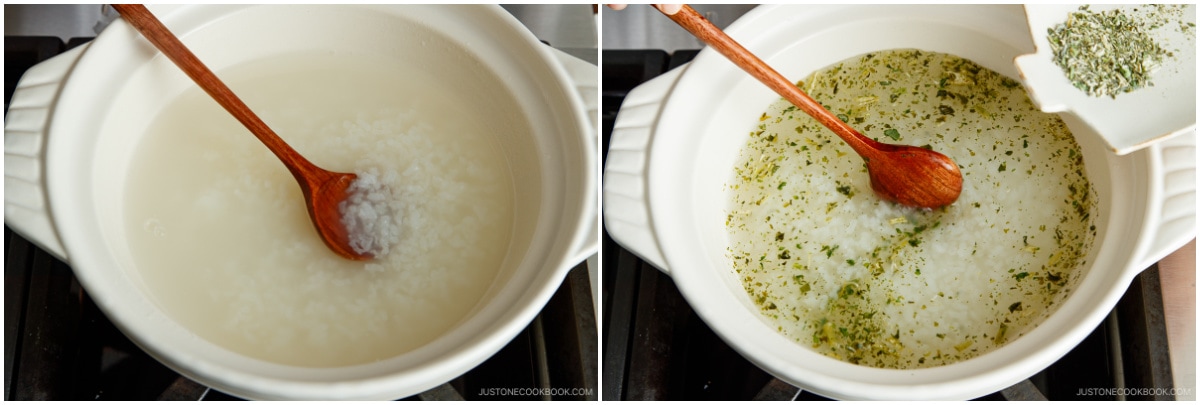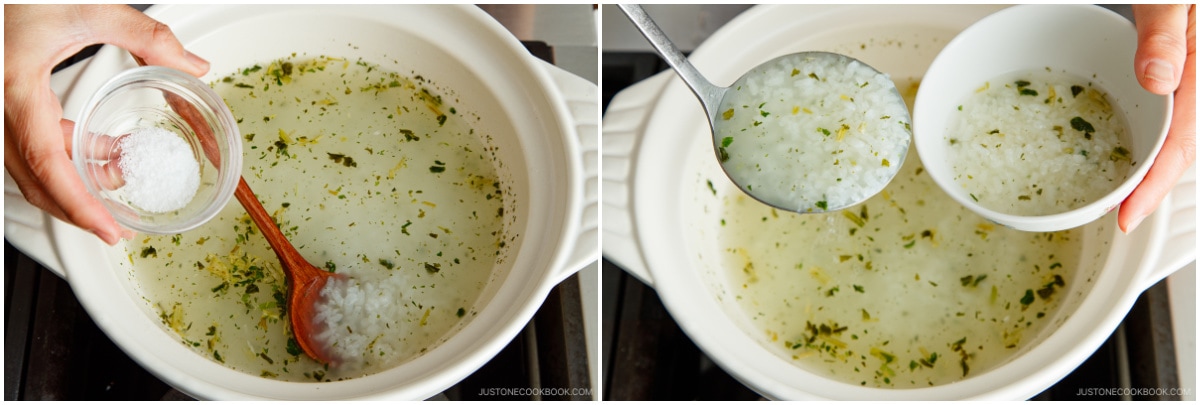On January 7th each year, the Japanese observe a tradition known as Nanakusa no Sekku (七草の節句), or the Festival of the Seven Herbs, by eating a healthy rice porridge called nanakusa gayu (七草粥). This time-honored custom is believed to bring good health and ward off evil spirits for the rest of the year. The simple meal of rice porridge hits the spot after all the New Year feasting and helps our overindulged stomachs to heal and recover. If you’re ready for a reset, this tasty yet light porridge is a delicious way to get back on track.
What is Nanakusa Gayu?
Nanakusa gayu (seven herb rice porridge) is a type of okayu, or rice porridge, made with seven herbs (七 nana 草 kusa). We sometimes call it haru no nanakusa (春の七草), which means “spring‘s seven herbs,” because the young herbs that are available during this time of year are more tender and fragrant. The custom of eating hot rice porridge on the 7th day of the Japanese New Year has its roots in Chinese belief and traces back to ancient times in Japan. Based on the Chinese legend, January 7th is also known as Jinjitsu (人日), one of the 5 seasonal festivals (節句), during which we celebrate everyone’s birthday as it is considered the day humans were born. In Japan, we usually eat a plain bowl of okayu when we’re feeling under the weather because it is light, comforting, and easy on the stomach. It heals any heavy feelings or sicknesses. As we wrap up the New Year festivities, it makes sense to eat nanakusa gayu. Since there is little green during the winter, the porridge’s young herbs bring color to the table and represent renewal for the new year.
What Are the Nanakusa (Seven Herbs)?
Here are the seven herbs used in nanakusa gayu: 🎶 To help remember the herbs, we even have a song that goes like this: “Seri Nazuna, Gogyo Hakobera Hotokenoza, Suzuna Suzushiro Korezo Nanakusa.”「せり なずな、 ごぎょう はこべら ほとけのざ、 すずな すずしろ、これぞななくさ」
Where To Find Nanakusa
In Japan
You can find convenient “Haru no Nanakusa Set” (春の七草セット) packages in grocery stores in Japan. They are a bundle of fresh herbs ready to use in making nanakusa gayu.
Outside of Japan
It’s challenging to find all seven traditional herbs outside of Japan. However, you can still make nanakusa gayu and enjoy the porridge at home. Locally available herbs/greens: Over the years, I’ve cooked with various herbs and made my own versions, and each one turns out just as delicious. Here are some greens I’ve used from a Japanese market: You can also use basil, chervil, chives, fennel, mint, and watercress. Use a selection of greens you enjoy that are available near you. Make sure nothing is too strong or dominant in the amount that overpowers the flavors. Freeze-dried nanakusa: You can also buy a freeze-dried nanakusa package from Japan at a Japanese grocery store in your area.
How to Make Nanakusa Gayu
It’s very simple and easy to make Japanese rice porridge. Here’s a quick summary of how to make it. For precise ingredients and step-by-step instructions, see the recipe card below.
Rice-to-Water Ratio for Rice Porridge
I use 1 rice cooker cup (180 ml) of uncooked Japanese short-grain rice and 1 L (1000 ml) of water to make nanakusa gayu. I like this ratio because it’s easy to remember. It also has the typical zengayu (全粥) consistency, with barely any liquid left in the pot after cooking. If you like a more watery consistency, you can increase the water amount to 1.2 L (1200 ml). Rice-to-Water Ratios for your Desired Consistency (1 rice cooker cup is 180 ml):
1:5 – Zengayu (全粥, 五倍粥) = 1 rice cooker cup + 900 ml (not much water left) 1:7 – Shichibugayu (七分粥, 七倍粥) = 1 rice cooker cup + 1260 ml 1:10 – Gobugayu (五分粥, 十倍粥) = 1 rice cooker cup + 1800 ml 1:20 – Sanbugayu (三分粥, 二十粥) = 1 rice cooker cup + 3600 ml (very watery)
Make Porridge Using Cooked Rice
You can make Nanakusa Gayu with cooked rice. Use leftover rice or defrost frozen rice. (Freezing is the best way to store cooked rice!) The ratio of cooked rice to water (by volume) is 1:2 or 1:3. The easiest way to measure is with a Japanese rice bowl. For 2 servings of rice porridge, use 1 rice bowl (200 ml size) of cooked rice and 2-3 rice bowls of water. For zengayu consistency, use 2 rice bowls of water.
Cooking Tips
If you’re new to making rice porridge, here are a few things to keep in mind:
Use a heavy-bottomed pot like a donabe (Japanese clay pot) or Dutch oven. The rice cooks more evenly because thicker pots distribute heat beautifully compared to regular, thinner pots that tend to have hot spots.
When cooking the rice, cover the pot with the lid slightly ajar, especially if the pot is shallow or does not have much space. This prevents pressure and steam from the starchy water from building up and boiling over. Do not open the lid or stir while cooking.
Turn the heat to medium to bring it to a boil, then reduce to low and cook for 30 minutes. Turn off the heat and let it steam for 5 minutes.
Blanch the herbs/greens in salted water separately, then add them to the porridge at the end to help maintain their bright color.
Optionally, add toasted rice cakes on top. While my mom did not add kirimochi to her Nanakusa Gayu, I learned that some people do, and my family loves it! It’s a great way to use up leftover kirimochi from Japanese New Year.
Use Donabe (Japanese Clay Pot) for Nanakusa Gayu
For the best-tasting okayu, I recommend using a donabe (土鍋), a Japanese earthenware pot, to cook the porridge. This traditional clay pot distributes heat beautifully and retains heat well, and it makes lovely serveware for nanakusa gayu. It certainly suits the spirit of Japanese New Year to serve such a meaningful meal in a traditional donabe. If you are shopping for a donabe, please see my tips on how to choose the best donabe for you. Before you use your donabe for the first time, please learn how to season and care for your donabe.
More on Japanese New Year Traditions and Foods
How Do The Japanese Celebrate The Japanese New Year Toshikoshi Soba (Japanese New Year’s Eve Noodles) Osechi Ryori (Japanese New Year Food) Kagami Biraki – Mochi Breaking Ceremony Eating Nanakusa Gayu on The Festival of the Seven Herbs
Wish to learn more about Japanese cooking? Sign up for our free newsletter to receive cooking tips & recipe updates! And stay in touch with me on Facebook, Pinterest, YouTube, and Instagram. Editor’s Note: The post was originally published on January 5, 2017. It was updated with new images, a revised recipe, and more helpful content on February 19, 2024.
